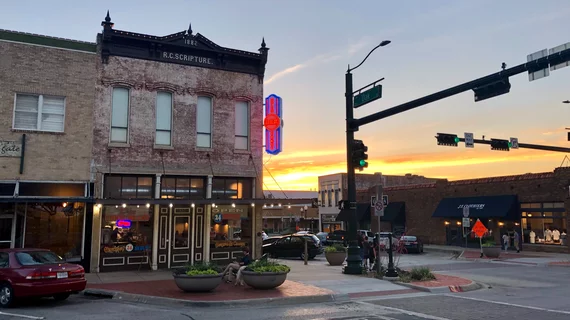Why would an ambitious radiologist choose rural life and practice? 4 reasons
“Better beans and bacon in peace than cakes and ale in fear.”
So says Country Mouse to his cousin City Mouse in Aesop’s timeless fable. The ancient tension over comfort zones and pride of place gets a fresh rethink in an opinion piece published Jan. 9 in Academic Radiology.
Only this time the players are not mice but radiologists and the viewpoint not neutral but rural through and through.
“Understanding the potential benefits of rural practice is important for all radiologists, even those who would never consider working and living in such a setting,” write medical student Kyle Burton and radiologist Richard Gunderman, MD, PhD, both of Indiana University.
Those willing to seek such understanding shouldn’t struggle to appreciate rural radiologists’ attraction to a setting in which opportunities abound for getting to know the people they serve, the authors suggest.
In fact, rural rads are frequently “on a first-name basis with people their urban and especially teleradiology colleagues may never have spoken to.”
Other pluses the rural life offers, as summarized by Burton and Gunderman [1]:
1. Rural radiologists are more likely to feel connected to their communities. “In many cases, their children go to the same schools, they shop in the same stores, and they worship in the same congregations” as other members of the community, the authors point out. More:
In short, rural radiologists often enjoy enhanced opportunities to develop and contribute not just as physicians but also as fellow citizens, neighbors and friends. Every time they go to the grocery store, they see their patients.”
2. Rural radiology provides more opportunities for radiologists to draw on the full range of their training and maintain competence across a larger range of the field. Rural radiologists often contribute to patient care “across the full spectrum of radiology, including a broad mix of diagnostic and interventional work that encompasses the full range of imaging modalities, organ systems and age ranges.”
To be sure, such a radiologist might seek help in interpreting some forms of advanced imaging or refer a patient to a larger center for some types of care, but there is real fulfillment in the life of a radiologist in full.”
3. Compared to colleagues in large academic medical centers, a rural radiologist typically plays a larger role in consulting on and coordinating patient care. Rural referring clinicians tend to rely more heavily on radiologists than their urban and suburban peers for guidance on treatment decisions, Burton and Gunderman state. “The rural radiologist functions more often as healthcare’s quarterback, helping to devise plans for diagnostic workup and care,” they add, “and ensuring that patients are directed to the appropriate colleagues.”
In many [rural] settings, radiologists are recognized and admired as among the most knowledgeable and helpful physicians in the hospital and the community.”
4. Rural America is prime territory for individuals who find great reward in serving the underserved and helping to rectify health disparities. Many rural communities exhibit higher incidences of disease and disability, higher mortality rates, lower life expectancy and higher rates of chronic disease and pain, the authors note. Such problems might trace to isolation, lower socioeconomic status, higher rates of some hazardous activities, limited healthcare access and reduced employment opportunities, they add.
[S]ome care more about the differences they make than about leading a comfortable life, and those who choose rural practice often enjoy opportunities to make bigger differences simply because the need there is often greater.”
Turning to steps the profession of radiology could take to support rural radiologists, Burton and Gunderman call for radiology education—which mostly takes place in urban academic settings—to cover the pros and cons of rural life and practice.
“Most medical students in the United States should have some exposure to rural practice, not only to encourage them to consider such careers but also so they can collaborate more effectively with rural colleagues when they enter urban or suburban practice,” they write. “More broadly, the field of radiology and the profession of medicine need to overcome the bias that only subspecialists can represent medicine at its best. In many cases, generalists are making larger aggregate contributions.”
Burton and Gunderman conclude:
Rural radiology offers distinctive opportunities to cultivate a special set of excellences that extend beyond medicine to include excellences of citizen and neighbor. To opt for rural practice is to embark on an adventure that is not for everyone, but for the appropriate people answering this call it can make all the difference.”

